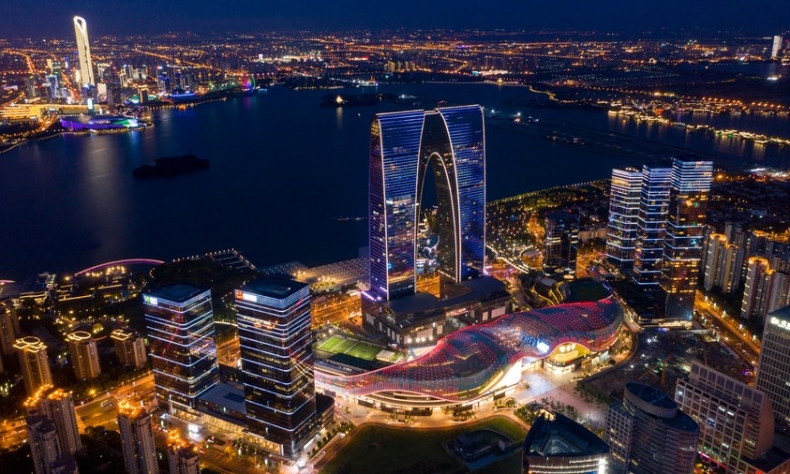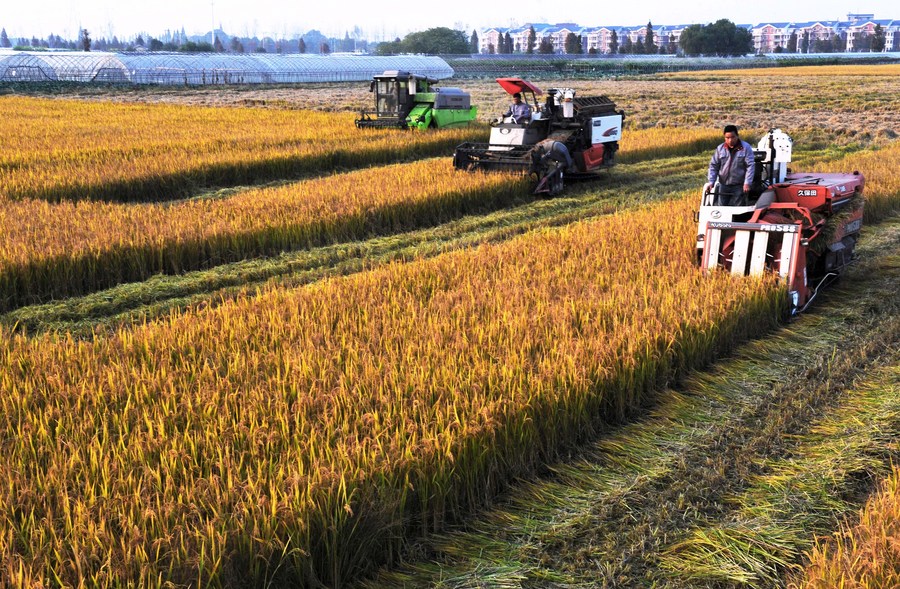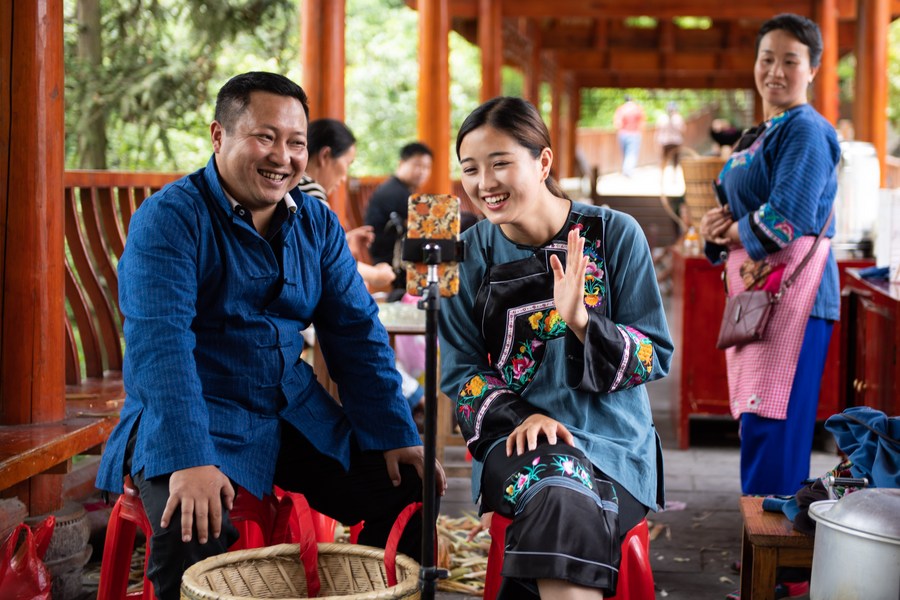How Has China Explored the Chinese Path to Modernization?

Chinese modernization promotes building a community with a shared future for mankind and China will work together with other countries to create a better future.
In his report to the 20th National Congress of the Communist Party of China (CPC), Xi Jinping, general secretary of the Central Committee of the CPC underscored, “From this day forward, the central task of the Communist Party of China will be to lead the Chinese people of all ethnic groups in a concerted effort to realize the Second Centenary Goal of building China into a great modern socialist country in all respects and to advance the rejuvenation of the Chinese nation on all fronts through a Chinese path to modernization.”
This means the CPC will start a new journey in a new era, leading a Chinese path to modernization to advance the rejuvenation of the Chinese nation.
How has China explored the Chinese path to modernization?
The exploration of the Chinese path to modernization could date back to the eve of the founding of the People’s Republic of China (PRC). In March 1949, at the Second Plenary Session of the Seventh Central Committee of the CPC, Mao Zedong pointed out that the major task of the Party after achieving victory of the revolution was to build China into an industrial country as well as a socialist country, which showed that the Party had started to take into account the industrialization of a new China at that time.
Early exploration of Chinese modernization
From the founding of the PRC in 1949 to the implementation of reform and opening up in 1978, all the theories and practices of the CPC in leading China’s modernization were centered around the “Four Modernizations”. In early period of the new China, it faced a stern reality that the country’s economic and industrial foundation was so weak that it could not even produce a tractor. Hence the CPC must give priority to achieving national industrialization among all goals of modernization.
At the First Session of the First National People’s Congress held in September 1954, Mao Zedong proposed a grand vision of building China, an “economically and culturally backward country”, into an “industrialized” and “great country with a high degree of modern culture” after several five-year plans. Industrialization officially became the primary goal of China’s modernization.
Also at this meeting, on behalf of the CPC Central Committee, Premier Zhou Enlai for the first time in the Government Work Report put forward the goal of modernization in four aspects, namely, “industry, agriculture, transportation and national defense”. This is the initial statement of the goal of “Four Modernizations” proposed by the CPC.

With a deepening understanding of the situation and the socialist construction, the CPC adjusted, developed and improved the strategic goal of national modernization.
Based on Mao Zedong’s proposal, in December 1964, Zhou Enlai, on behalf of the Central Committee of the CPC and the State Council, standardized the elaboration of the goal of “Four Modernizations” for the first time in the Government Work Report at the First Session of the Third National People’s Congress, that was, “to build China into a strong socialist country with modern agriculture, industry, national defense and science and technology”.
The slogan of “Four Modernizations” was thereupon spread across China and became the common goal pursued by both the Party and all Chinese people. In a long period since then, “Four Modernizations” had been a powerful spiritual drive uniting and inspiring all Chinese people to strive for the goal with unremitting efforts.
Upgraded Chinese modernization
China began to implement the reform and opening up after the Third Plenary Session of the 11th Central Committee of the Party in 1978. At that time, what the Party concerned most was to find a path to modernization that could best suit a socialist China. Based on the experience and lessons over the past three decades since the founding of the PRC, the Party was determined to chart out its own path to modernization – the socialist modernization with Chinese characteristics.
Deng Xiaoping is the pioneer of exploring the path to the socialist modernization with Chinese characteristics. He made adjustment of the roadmap of “Four Modernizations” based on the level of productive forces and circumstance at that time. He also proposed a new goal of building a “xiaokang” society, or a moderately prosperous society, to achieve Chinese modernization.
In Deng’s vision, the xiaokang society has two meanings: first, the country puts off the timetable of achieving “Four Modernizations” which was originally set to be realized by the end of the 20th century. And xiaokang means moderately prosperous which is obviously lower than the level of Western developed countries. Second, xiaokang society is socialist and seeks to reach common prosperity. This was a significant adjustment made by the CPC to the connotation and standard of the “Four Modernizations” proposed in the 1960s, and it was suitable to the reality and fact of China at that time.

The goal of Chinese modernization and building a moderately prosperous society are holistically integrated as a whole, deepening China’s strategic planning, development steps and stage goals for modernization.
At the beginning of the 21st century, China had basically achieved xiaokang. People’s livelihood had been greatly improved. However, the country at that time remained at a relatively low level of xiaokang. China’s development remained unbalanced and incomplete. The people’s need for food and clothing had been met but their need for abundant consumption was far to be met.
In face of this situation, then Chinese leader Jiang Zemin put forward the goal of “completely building” xiaokang – a moderately prosperous society – in all respects at the 16th National Congresses of the CPC. And Jiang’s successor Hu Jintao reaffirmed the roadmap to the goal at the 18th National Congresses of the CPC.
“Building xiaokang in all respects”, which is an all-round upgrade of the xiaokang society proposed by Deng Xiaoping, not only pursues economic development, but also seeks progress in many other fields, including legal system, culture, people’s livelihood and environmental protection.
From building xiaokang to building xiaokang in all respects, the CPC has been constantly adjusting and refining the goal of socialist modernization with Chinese characteristics. The latter is important improvement and extension of Deng Xiaoping Theory on xiaokang society and Chinese modernization.
Chinese modernization is contribution to human civilizations
Since the 18th National Congress of the CPC, under the leadership of the Party with Xi Jinping at its core, China has further developed the path to modernization in both theory and practice. Over the past 10 years, China has ushered in a new era of socialism with Chinese characteristics; and eradicated absolute poverty and finished building a moderately prosperous society in all respects, thus completing the First Centenary Goal. China is marching forward on the road to realizing the Chinese dream of national rejuvenation.
The cause of building socialist modernization with Chinese characteristics has come to a new starting point as the country finished building xiaokang society in all respects. That is to basically realize socialist modernization from 2020 through 2035 and build China into a great modern socialist country in an all-round way from 2035 through the middle of this century.
In November 2013, the Third Plenary Session of the 18th Central Committee of the CPC put modernizing China’s system and capacity for governance as the general objective for deepening reform comprehensively with an aim to improve the system of socialism with Chinese characteristics.
Since then, modernizing China’s system and capacity for governance has become the fifth pillar adding to the “Four Modernizations” and a new benchmark of Chinese modernization, which enriches the meaning of the socialist modernization with Chinese characteristics in the new era.

If we say the “Four Modernizations” mainly involve modernizing productive forces and material foundation, then modernizing China’s system and capacity for governance concentrates on political superstructure and ideological aspect, which becomes the core feature and one of the critical connotations of the Chinese path to modernization.
Meanwhile, the 18th National Congress of the CPC also adopted the Five-Sphere Integrated Plan to promote coordinated economic, political, cultural, social, and ecological advancement. The plan increases the dimensions of socialist modernization with Chinese characteristics from the “one dimension” of material civilization to the “five dimensions” including material, political, cultural, social and ecological aspects. More importantly, it redefines the nature of Chinese path to modernization which is regarded as a contribution to creating a new form of civilization.
Chinese modernization is the socialist modernization led by the CPC. It has the common points of the modernization process in other countries and it is also featured with Chinese characteristics. Chinese modernization which involves the largest population, seeks common prosperity for all, coordinated material and cultural advancement, harmony between humanity and nature, and most importantly it is peaceful development.
As practice has proven, the Chinese path to modernization led by the CPC has following features. Firstly, independence. China has always firmly followed its own path to pursue socialist modernization with Chinese characteristics.
Secondly, it is groundbreaking. The modernization for more than 1.4 billion Chinese people will be an unprecedented achievement in human history and it will completely change the world structure.
Thirdly, it is inclusive to all. With people at center, the Chinese modernization adheres to common prosperity and make everyone live a better life.
Fourthly, it is coordinated development. Not only it seeks to increase the material living standards, but also enrich the cultural life, thus to promote the coordinated development and progress in all respects.
Fifthly, it is a sustainable path. Instead of the old pattern of growth at the cost of pollution, China has attached great importance to the sustainable development and protection of ecological environment.
Sixthly, it is peaceful development. Entirely different from the “zero-sum” mentality and the theory that “a country is bound to seek hegemony as it becomes a world power”, Chinese modernization promotes building a community with a shared future for mankind and China will work together with other countries to create a better future.
The author is a professor of teaching and research department of society and ecological civilization at Party School of the Central Committee of CPC (National Academy of Governance).
The article reflects the author’s opinions, and not necessarily the views of China Focus.
Translated by He Yuting and Bai Shi.
 Facebook
Facebook
 Twitter
Twitter
 Linkedin
Linkedin
 Google +
Google +










